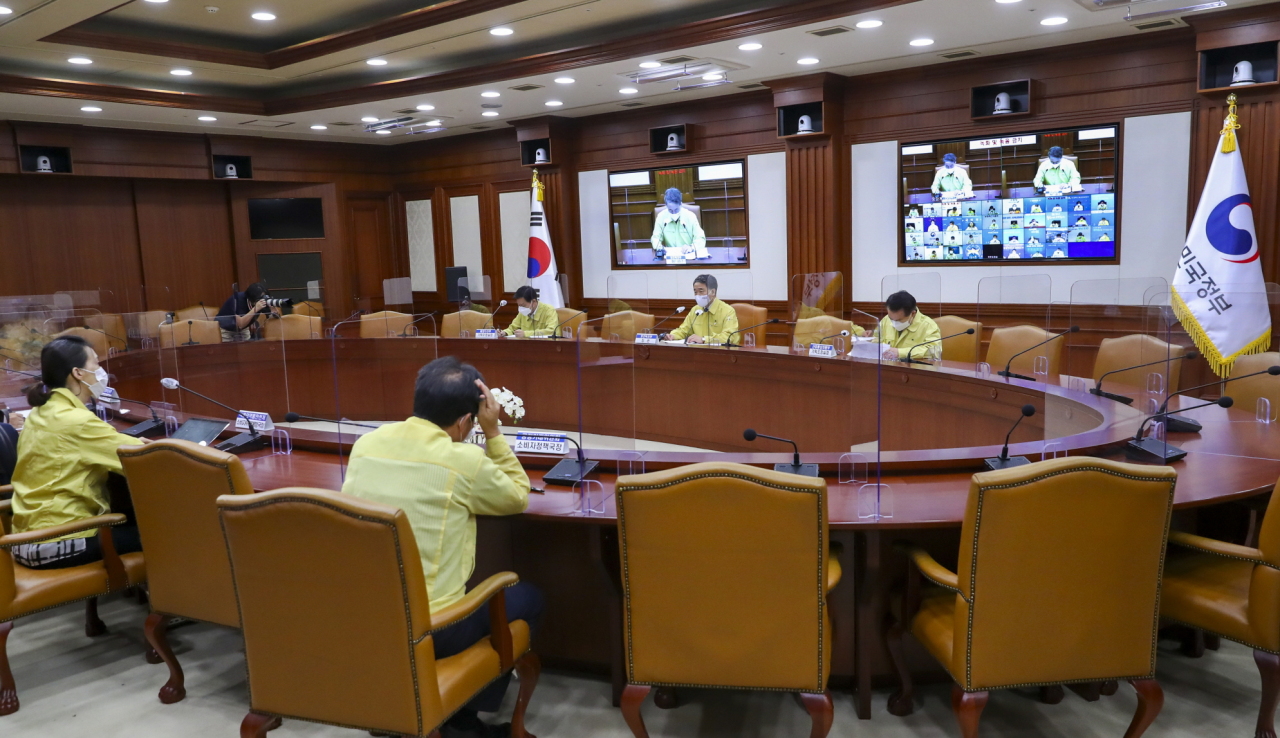Korea hesitates to lift ‘intensive’ physical distancing
Daily cases dip below 200 for 10th straight day
By Kim ArinPublished : Sept. 12, 2020 - 10:19

Korea confirmed 136 more COVID-19 cases -- 118 locally transmitted and 18 imported -- in the 24-hour period ending Friday at midnight. The cumulative number of cases now totals 22,055.
The number of people in Korea who have died from COVID-19 increased by five to 355, with the overall death rate standing at 1.61 percent. The infection is much deadlier for the elderly, killing nearly one in five of patients 80 or older.
The case counts have improved across the nation since the summer peak in August. But health authorities are wary of easing restrictions just yet.
“Some 35 percent of active cases now are those 60 or older, which compares to the first wave when 37 percent of the confirmed cases were people in their 20s,” said Minister of Health and Welfare Park Neung-hoo during the government’s COVID-19 task force meeting Saturday morning.
As older patients tend to have worse outcomes, the number of patients requiring admission into an intensive care unit is anticipated to increase, Park said. Patients aged 60 and above make up 87 percent of severe cases in the country, according to Friday data.
Hospitals are already running short on ICU beds. Only 38 out of 532 critical care beds in Korea were available as of Friday. According to recent forecasts -- which do not factor in the demand for beds for non-COVID-19 emergencies -- hospitals in cities such as Incheon, Daegu and Ulsan are on the brink of reaching full capacity.
Korea’s containment strategy of “trace, test and treat” has run into a wall as a growing proportion of infections remain “untraceable.” For about 25 percent of the cases confirmed in the past month, the point of infection was unknown.
Health authorities say they are struggling to get a grip on multiple hot spots emerging across the country.
“Outbreaks are being found in remote towns that were unscathed during the February-March first wave in Daegu and North Gyeongsang Province,” Kwon Jun-wook, the deputy director of the disease control agency, said during a briefing Saturday afternoon.
“The resurgence this time is proving to be tougher to contain -- spreading farther and lasting longer,” he said.
Top health officials are mulling an extension of “intensive” physical distancing measures for another week, possibly longer. But there will be “some compromises” considering the economic impact of prolonged interventions, they said.
The distancing scheme including restrictions on outdoor dining, shutdowns of risky venues such as nightclubs and gyms and a mask mandate is set to expire Sunday.
By Kim Arin (arin@heraldcorp.com)












![[Today’s K-pop] BTS pop-up event to come to Seoul](http://res.heraldm.com/phpwas/restmb_idxmake.php?idx=644&simg=/content/image/2024/04/17/20240417050734_0.jpg&u=)





![[KH Explains] Hyundai's full hybrid edge to pay off amid slow transition to pure EVs](http://res.heraldm.com/phpwas/restmb_idxmake.php?idx=652&simg=/content/image/2024/04/18/20240418050645_0.jpg&u=20240418181020)

![[Today’s K-pop] Zico drops snippet of collaboration with Jennie](http://res.heraldm.com/phpwas/restmb_idxmake.php?idx=642&simg=/content/image/2024/04/18/20240418050702_0.jpg&u=)